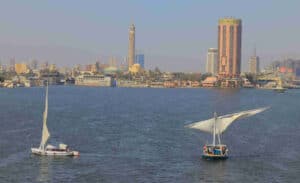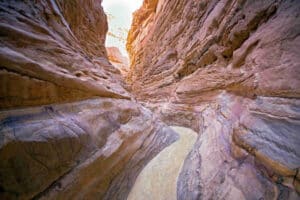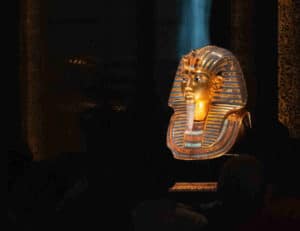If we talk about Byzantine art, one of its great signs of identity are its icons, such as the icons of the Monastery of St. Catherine of Sinai: they emerged in the early days of Christianity in the East and popularized centuries later, to the point of remaining the most recognizable element of Orthodox art and present in Christian churches. Such popularity reached that they were the cause of some great schisms in the Church (iconoclastic conflicts), because in the VIII-IX centuries it was considered that the cult to these images exceeded what was desirable, reaching idolatry.
Well: the best concentration of icons in the world is precisely in Egypt, and it is the aforementioned St. Catherine of Sinai Monastery. Therefore, in this post we focus on this site and, more specifically, on its collection of icons, which will delight lovers of art and religion.
What is an icon
Icons are representations of the Virgin, Jesus Christ or Christian saints made with a series of very recognizable characteristics. For example, their usual composition in the foreground or enlarged bust, giving great monumentality to the characters represented. Their golden backgrounds are also very common, with different pictorial techniques, such as tempera or encaustic. In addition, the figures usually show a certain rigidity and hieratism, which reinforces their sacred and solemn character.
The best icons of Saint Catherine of Sinai Monastery
The importance of the icons of the Monastery of St. Catherine of Sinai lies in two aspects: their technical quality and, above all, their antiquity, since here are preserved some of the primitive icons that, in one way or another, exerted a great influence on Byzantine and Orthodox art, and also on other later artists, even contemporary ones.
These icons are housed in the so-called Monastery Museum, consisting of a dozen rooms. But, despite its small size, its value is enormous and is able to generate an atmosphere of peace and even mysticism among visitors who visit it.
If some of the icons of the Monastery of St. Catherine of Sinai were to be highlighted, the following would certainly not be left out of the selection:
- The Stairway of the Divine Ascent (12th century): it represents the ascending path that ascetic monks must take to reach heaven, composed of 30 steps. Jesus waits at the top of this staircase. And also present is John Climacus, anchorite and ascetic monk who devised this celestial path in about 600 AD.
- St. Peter the Apostle (6th-7th centuries): made in the encaustic technique by an anonymous artist from Constantinople, it shows this saint with his usual attribute: the keys of heaven. Jesus Christ and the Virgin Mary are also present.
- Pantocrator of Sinai (7th century): probably a gift from the court of the Byzantine emperor Justinian to this monastery, it is one of the icons of greatest technical mastery, especially for the representation of the face of Jesus Christ, where despite its certain rigidity, it reveals a touching compassion towards the spectator.
- Moses and the burning bush (12th century): interesting icon because it represents an episode that took place in the monastery itself, that is, the miracle witnessed by this prophet, who here is untying his sandal while contemplating the prodigy.
- Menologion for the whole year (11th century): a work of great interest for its thoroughness, as these tables show the annual calendar of feasts associated with each saint. At the top, Jesus Christ and the Virgin Mary, as well as the main feasts of Christianity.
These are only five icons from the collection, but there are many others, as well as manuscripts of great value made precisely in this monastery, in addition to ancient liturgical objects. For all these reasons, the monastery and, in particular, its museum are a must for lovers of cultural and religious tourism.



